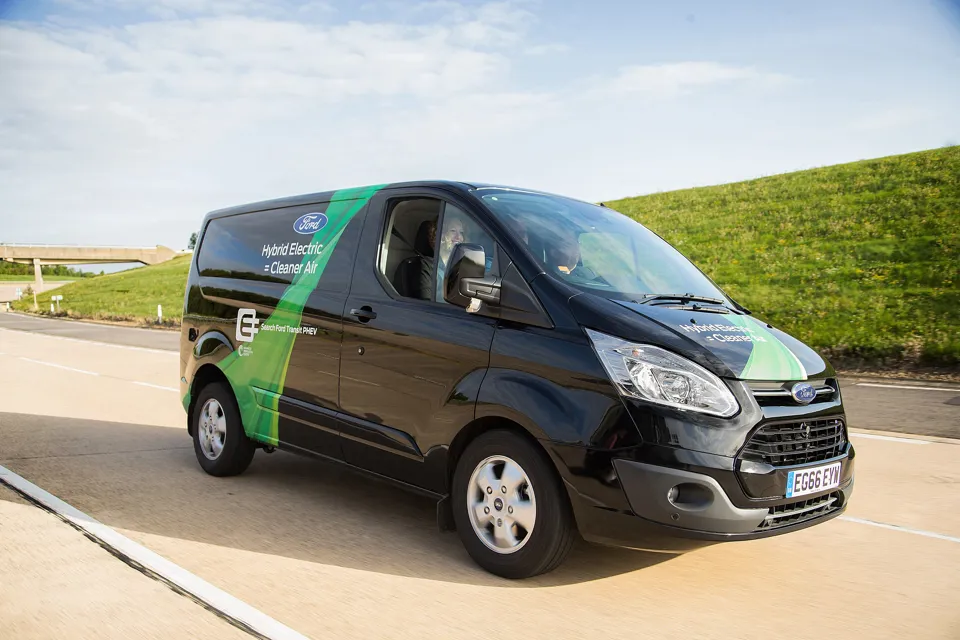Organisations and drivers who take on new zero emission, ultra low emission and other alternatively fuelled vans will benefit from ongoing incentives under Government plans to reform the van vehicle excise duty system.
The Government will also introduce a two-category approach, graduated by CO2 when the van is first registered, followed by a standard rate from April 2021.
The new system would also see the rates differ between small and large vans, and given larger vans generally emit higher CO2 emissions, smaller rate increases between bands have been proposed.
Exact weight categories, CO2 banding and rates will be announced ahead of introduction in April 2021, once the impact of WLTP has been fully assessed by the Government.
The Vehicle Excise Duty for vans: summary of responses report said: “The Government is minded to announce new bands and rates for introduction from April 2021, once the impacts of the current transition to the new CO2 testing regime, known as WLTP, can be fully determined.
“This timeline for introducing the new system will give van manufacturers time to reflect the new values in all new vans, and allow the government to fully assess the impact of WLTP on the van market.
“The Government recognises that van drivers should not be penalised for using an essential business tool.
“The Government is committed to delivering on its climate change and air quality targets.
Providing an on-going VED discount beyond the first year is an important part of meeting the ambition for 40% of new vans to be ultra low emission by 2030.
“Therefore, the government will introduce a £0 standard rate for zero emission vans and an ongoing discount for ultra low emission and other alternatively fuelled vans. In this context, the government will also maintain a differential between zero emission vans and those which emit some CO2.
“This approach allows for the introduction of a strong environmental signal for new vans, while ensuring larger vans are not penalised, as these models generally emit higher levels of CO2.
“However, the government is also mindful of not introducing unnecessary complexity into the tax system and will ensure the proposal remains straightforward for taxpayers to understand.
“The government believes that introducing two categories balances these two objectives.”
The report has been published following the Spring Statement, where the Government announced a consultation on reforming the VED system for vans in order to incentivise van drivers purchasing a new van to make the cleanest choices.
The report notes that almost all respondents were supportive of the government reviewing the current VED system for vans, which is set at a flat rate per year for most van drivers (currently £250).
The majority of respondents were supportive of a new van VED system that reflects the environmental performance of different models.
There was broad support for the principle of introducing a CO2 based system.
Indicative VED table for two-category approach
Small /medium sized vans
|
CO2 emissions2 |
Proposed first year rate3 |
Proposed standard rate3 |
|
||
|
|
|
|
|
||
|
0 |
£0 |
£0 |
|
||
|
1-50 |
£10 |
£125 |
|||
|
51-75 |
£100 |
£265 |
|||
|
76-90 |
£150 |
£265 |
|||
|
91-100 |
£190 |
£265 |
|||
|
101-110 |
£230 |
£265 |
|||
|
111-130 |
£270 |
£265 |
|||
|
131-150 |
£310 |
£265 |
|||
|
151-170 |
£500 |
£265 |
|||
|
171-190 |
£1000 |
£265 |
|||
|
191-225 |
£1500 |
£265 |
|||
|
Over 225 |
£2000 |
£265 |
|||
|
|
|||||
Large vans
|
0 |
£0 |
£0 |
|
||
|
1-50 |
£10 |
£125 |
|||
|
51-75 |
£100 |
£265 |
|||
|
76-100 |
£150 |
£265 |
|||
|
101-130 |
£190 |
£265 |
|||
|
131-160 |
£270 |
£265 |
|||
|
161-190 |
£310 |
£265 |
|||
|
191-220 |
£350 |
£265 |
|||
|
221-255 |
£390 |
£265 |
|||
|
>255 |
£500 |
£265 |
|||
- The bands outlined are indivative only and will depend on the impact of WLTP on the van market.

















Login to comment
Comments
No comments have been made yet.